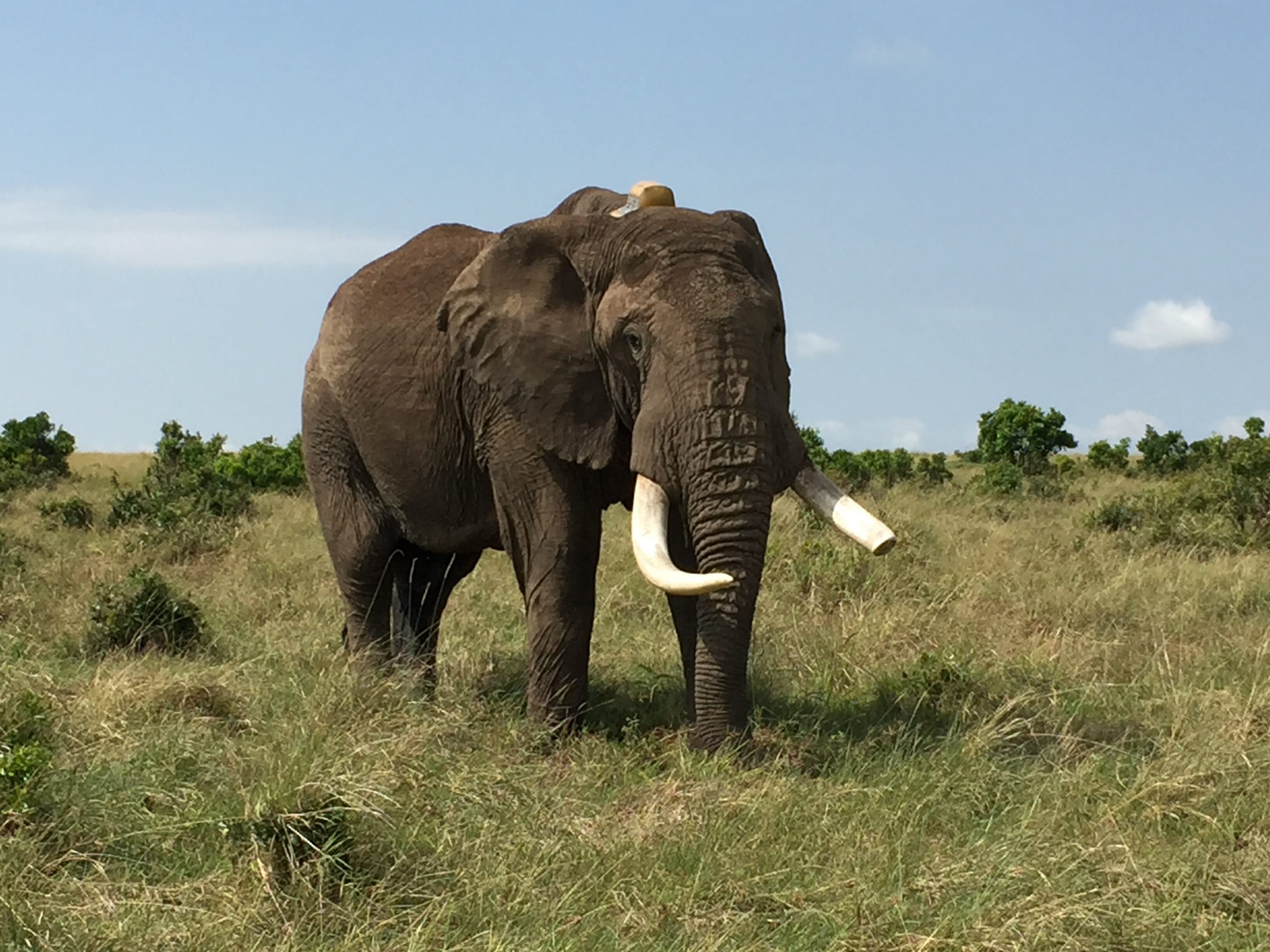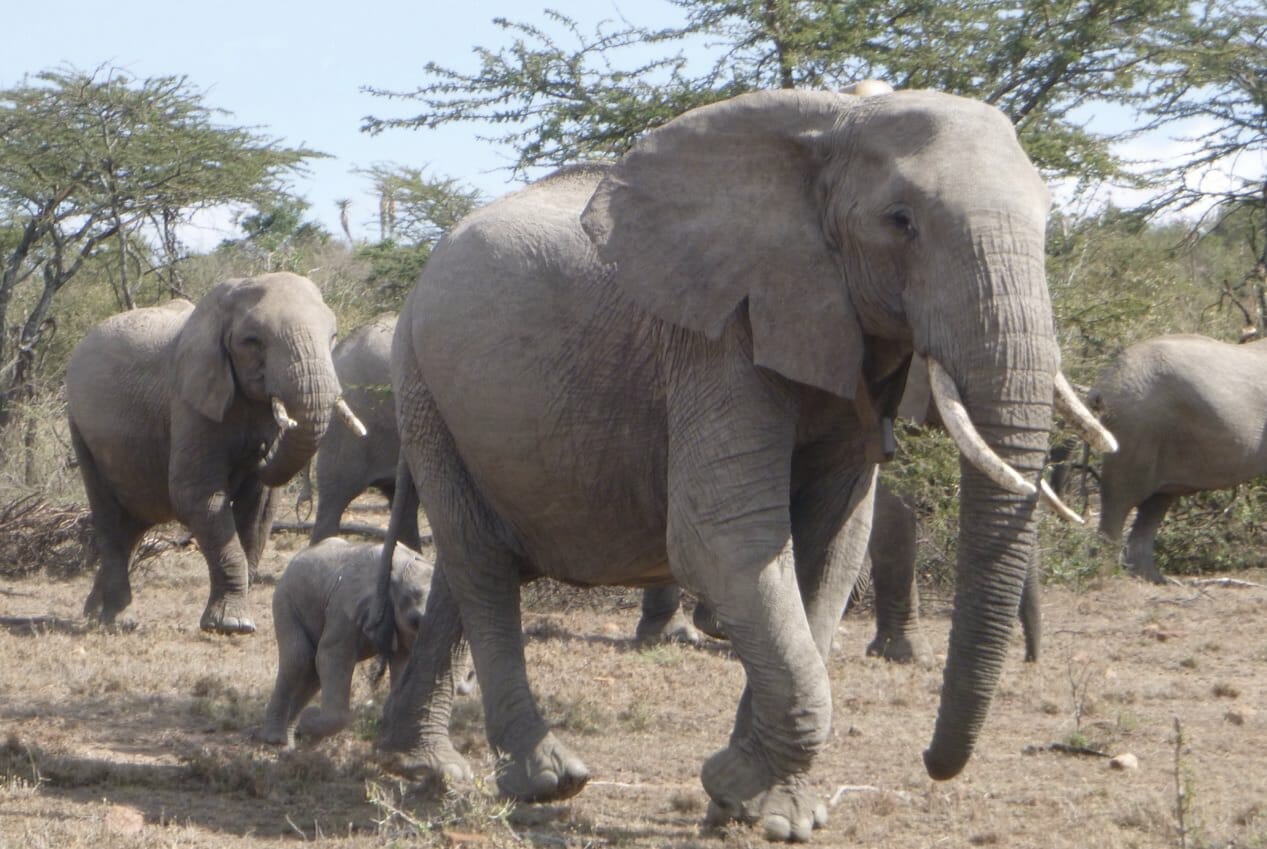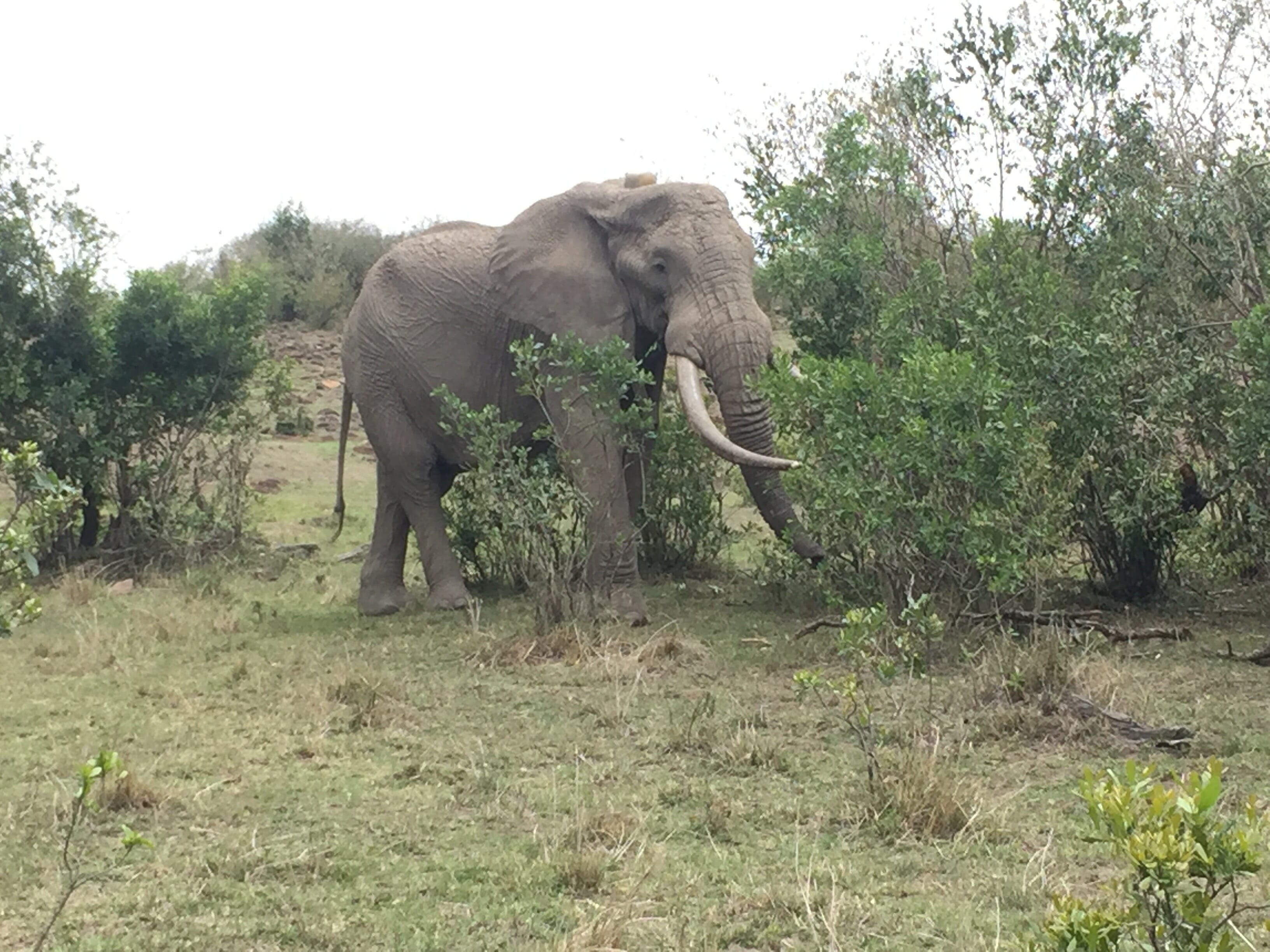Trying to find the perfect gift for the pachyderm in your life? How about a lovely collar that will keep them safe for three years?

Collared elephant Kegol.
Mara Elephant Project is looking for supporters to help us fund the re-collaring of eight of our most at-risk elephants in 2018. They’ve really enjoyed the collars they’ve had over the last three years but the battery life is up in 2018 and they need an upgrade. Elephants Lucy, Hugo, Kegol, Chelsea, Caroline, Naibosho, Shorty, & Fred all currently have collars that provide data which is used daily to mitigate human-elephant conflict, inform ranger deployment and anti-poaching work, and promote transboundary cooperation within the wider ecosystem. The collar software also includes alarms for MEP to respond to elephant immobility and geo-fence breaches and streaks (when an elephant moves quickly potentially signifying it is in danger).

Collared elephant Chelsea with her baby.
Mara Elephant Project’s approach to collaring, monitoring and researching elephants is a key component to ensuring we meet our mission objectives. Currently, MEP has 24 collared elephants that we monitor via Google Earth daily. While expanding our elephant collaring program is essential to MEP’s success, maintaining the current collars on key elephant subjects is equally as important. The candidates in need of a re-collaring are used to gather useful spatial data meaning they are elephants in border areas, areas of conflict or areas outside conservancies or national reserves. They also represent crop raiding elephants identified across the dispersal area and candidates that represent large herds.
The monitoring of elephants and supporting that aspect of MEP’s operations is equally as important. Through all of this monitoring, MEP generates monthly tracking reports, constructs density and movement maps, with partner Save the Elephants, and populates a shared geo-fence database. Each day coordinates are sent to ground patrols who use these to check on the elephants. Depending on the satellite image quality, it is possible to see settlements near the collared elephant. This information is used to anticipate possible human-elephant conflict incidents and intervene before it occurs. Though the aerial monitoring program we have identified that the 23 collared represent between 400 and 600 elephants, as counted each month.

Collared elephant Hugo.
The data collected from MEP’s elephant collars is the single best indicator for identifying elephant density hotspots, defining corridors, and illustrating elephant movements to target audiences. Combined data from a sample number of elephant collars spread across the elephant population present an accurate extent of the current elephant rangeland. The ongoing collection of data and further analysis must continue to provide the evidence underpinning the communications and advocacy efforts of the organization to protect this critical habitat into the future.
Here’s how you can support MEP’s collaring program
DONATE
Deploy an elephant collar
$1,500
Buy an elephant a collar
$3,000
Cover one year of an elephant collar, deployment, monitoring both on the ground and in the air and data download fees
$7,200
Cover the lifespan (3 years) of an elephant collar
$26,000
DONATE


